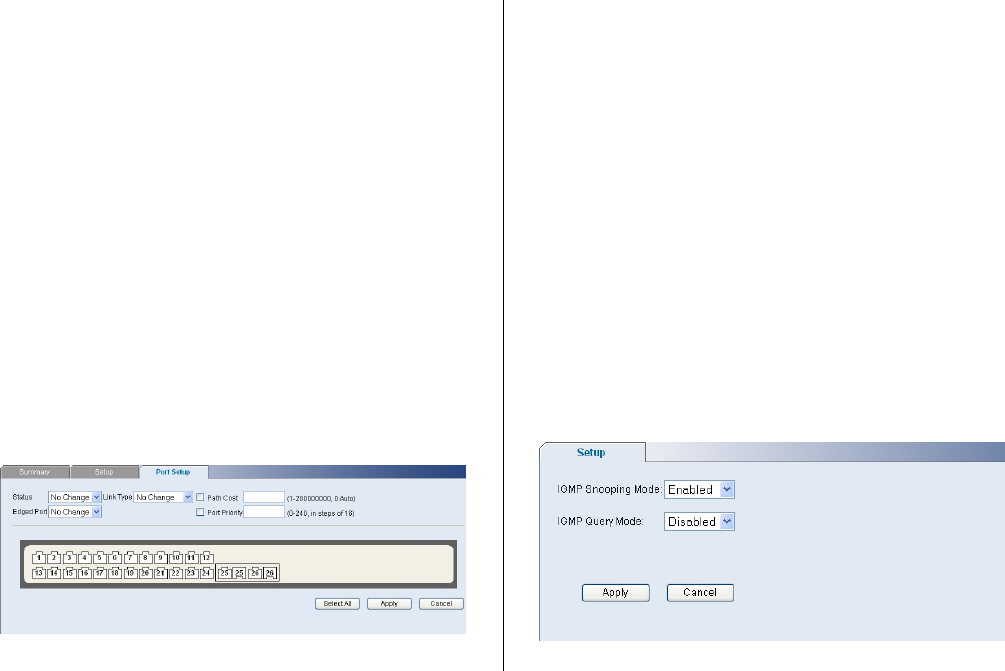
54 CHAPTER 4: CONFIGURING THE SWITCH FROM THE WEB INTERFACE
■ Status – Enables and disables spanning tree for the
port.
■ Edged Port – Enables and disables edged port for
the port.
■ Link Type – Choose between Point-to-Point, Shared,
or Auto for the link type.
■ Path Cost – The path cost is used to determine the
best path between devices. The path cost method is
used to determine the range of values that can be
assigned to each interface.
■ Port Priority – Used in selecting the root device, root
port, and designated port. The device with the
highest priority becomes the STA root device.
However, if all devices have the same priority, the
device with the lowest MAC address will then
become the root device.
If you modify any of these settings, click Apply to save
your changes.
Figure 42 Spanning Tree Port Setup Screen
IGMP Snooping & Query
This switch uses IGMP (Internet Group Management
Protocol) to query for any attached hosts that want to
receive a specific multicast service. It identifies the ports
containing hosts requesting to join the service and
sends data out to those ports only. It then propagates
the service request up to any neighboring multicast
switch/router to ensure that it will continue to receive
the multicast service. This procedure is called multicast
filtering.
The purpose of IP multicast filtering is to optimize a
switched network’s performance, so multicast packets
will only be forwarded to those ports containing
multicast group hosts or multicast routers/switches,
instead of flooding traffic to all ports in the subnet
(VLAN).
Choose Enabled or Disabled from the IGMP Snooping
Mode drop down menu.
Figure 43 IGMP Snooping & Query Setup Screen


















